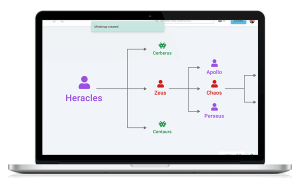Hey Knowhub, welcome! Ever felt that frustrating lag between clicking a link and waiting for a website to load? Or wished your favorite web apps worked seamlessly offline, just like their native counterparts? The future of web software is shifting, and Progressive Web Apps (PWAs) are leading the charge. They’re bridging the gap between traditional websites and native mobile apps, offering a faster, more reliable, and engaging user experience. Get ready to dive into the world of PWAs and discover how they’re reshaping the digital landscape.
In this article, we’ll explore how Progressive Web Apps (PWAs) are changing the future of web software, covering everything from their core functionalities to their impact on various industries. We’ll dissect the benefits, address the challenges, and peek into the exciting possibilities that lie ahead.
The Rise of the Progressive Web App
What Exactly is a PWA?
PWAs aren’t your grandpa’s websites. They’re web applications designed to feel like native apps, delivering a smooth, app-like experience directly within the user’s browser. Think of them as websites on steroids, offering features like push notifications, offline access, and fast loading times. This seamless integration makes PWAs a game-changer in the world of web development.
Forget cumbersome app store downloads and updates; PWAs are accessible directly from a web browser, eliminating the friction often associated with traditional apps. This streamlined approach makes it easier for users to engage with your content and services, boosting user engagement and satisfaction.
Why PWAs Are a Big Deal
The impact of PWAs on user experience is undeniable. They load quickly, even on flaky network connections, ensuring users stay engaged and don’t abandon your site due to frustrating wait times. This improvement in performance directly translates to increased user retention and conversions. Furthermore, their ability to work offline makes them incredibly reliable, allowing users to access content and functionality even without an internet connection.
PWAs are also incredibly versatile, working seamlessly across different devices and screen sizes. This responsive design ensures a consistent and optimized user experience, regardless of whether the user is on a desktop, tablet, or smartphone. This adaptability is crucial in today’s multi-device world.
PWAs: Transforming Industries
Reimagining E-commerce
PWAs are revolutionizing the e-commerce landscape. By providing a fast and engaging shopping experience, PWAs encourage browsing and increase conversions. Imagine a customer browsing your online store on their commute, even without internet access, thanks to the offline capabilities of PWAs. This seamless experience can significantly boost sales and customer loyalty.
Moreover, push notifications allow businesses to re-engage users with personalized offers and updates, driving repeat business and fostering stronger customer relationships. This level of engagement was previously only achievable with native apps, but PWAs now bring it to the web.
Empowering the Media
In the fast-paced world of media, speed and accessibility are paramount. PWAs empower media outlets to deliver content quickly and reliably, ensuring users stay informed and engaged. Push notifications can alert users to breaking news, keeping them up-to-date in real-time.
The offline functionality of PWAs is particularly valuable in regions with limited internet connectivity, ensuring that users can access vital information regardless of their location. This accessibility broadens the reach of media outlets and empowers users with information.
Revolutionizing Education
PWAs are transforming the educational landscape by providing accessible and engaging learning experiences. Students can access educational materials offline, making learning more flexible and convenient. Imagine a student studying on a bus, even without internet access, thanks to the offline capabilities of PWAs.
Interactive learning modules and quizzes within PWAs can enhance engagement and knowledge retention. Push notifications can remind students about upcoming deadlines and assignments, promoting better time management and academic success.
The Technical Landscape of PWAs
Service Workers: The Engine Behind the Magic
Service workers are the backbone of PWAs. These scripts run in the background of a user’s browser, enabling features like offline caching and push notifications. They act as a proxy between the web application and the network, intercepting network requests and serving cached content when offline.
This powerful functionality allows PWAs to deliver a seamless experience, even when the user’s internet connection is unreliable or non-existent.
Manifests: Defining the PWA Experience
The web app manifest is a simple JSON file that provides metadata about the PWA, such as its name, icon, and display preferences. This information allows the PWA to be installed on a user’s home screen, just like a native app.
This seamless integration blurs the lines between web and native apps, providing users with a more integrated and intuitive experience.
PWA vs. Native Apps: A Comparative Analysis
| Feature | PWA | Native App |
|---|---|---|
| Installation | Browser-based, no app store required | App store download required |
| Offline Access | Supported | Supported |
| Push Notifications | Supported | Supported |
| Development Cost | Generally lower | Generally higher |
| Updates | Automatic | Requires user interaction |
| Performance | Can be comparable to native apps | Generally higher performance |
The Future of PWAs and Web Software: How Progressive Web Apps (PWAs) Are Changing the Future of Web Software
How Progressive Web Apps (PWAs) are changing the future of web software is a question many are asking. As technology continues to evolve, PWAs are poised to become even more integral to the web experience. Advancements in web technologies like WebAssembly and WebXR will further enhance the capabilities of PWAs, blurring the lines between web and native apps even further.
We can expect to see PWAs playing a larger role in various industries, from healthcare to finance, offering innovative solutions and enhancing user experiences. The future of web software is undoubtedly intertwined with the continued evolution of PWAs.
Challenges and Considerations for PWA Development
While PWAs offer a myriad of benefits, there are also challenges to consider. Ensuring cross-browser compatibility and addressing limitations in certain browser APIs can require careful planning and development. How Progressive Web Apps (PWAs) are changing the future of web software also involves overcoming these hurdles.
Furthermore, discoverability can be a challenge, as PWAs are not listed in app stores. However, as PWAs gain wider adoption, these challenges are likely to be addressed through improved browser support and evolving web standards.
Conclusion
PWAs are transforming the web software landscape, offering a compelling alternative to traditional websites and native apps. Their ability to deliver fast, reliable, and engaging experiences is reshaping how users interact with the web. From e-commerce to education, PWAs are empowering businesses and organizations to connect with their audiences in new and innovative ways. Want to learn more about the latest trends in web development? Check out our other articles on [link to other articles].
FAQ about How Progressive Web Apps (PWAs) Are Changing the Future of Web Software
What is a Progressive Web App (PWA)?
PWAs are websites that act like apps. They offer the best of both worlds – the discoverability of a website and the functionality of a native app.
How are PWAs different from regular websites?
PWAs can work offline, send push notifications, and be added to your home screen, just like a regular app. Regular websites can’t do these things.
How are PWAs different from native apps?
PWAs don’t require downloading and installation from an app store. They are accessed directly through a web browser, making them easier to access and share.
What are the benefits of PWAs for users?
PWAs are fast, reliable, and engaging. They offer a smooth user experience, even with poor internet connection. They also take up less storage space than native apps.
What are the benefits of PWAs for businesses?
PWAs are cheaper to develop and maintain than native apps. They also reach a wider audience as they are accessible on any device with a web browser.
Do PWAs work on all devices?
Yes, PWAs work on any device with a web browser, including desktops, laptops, tablets, and smartphones.
How can I install a PWA?
Depending on the browser and device, you can usually install a PWA by clicking an “Add to Home Screen” button or option within the browser’s menu.
Are PWAs secure?
Yes, PWAs are served via HTTPS, which ensures a secure connection and protects user data.
What are some examples of popular PWAs?
Twitter Lite, Forbes, and Starbucks are some examples of popular PWAs.
What is the future of PWAs?
PWAs are becoming increasingly popular and are expected to play a significant role in the future of web software, offering a seamless and engaging user experience across all devices.






